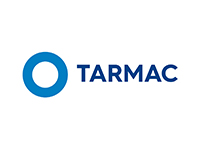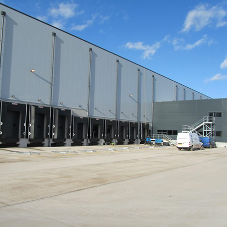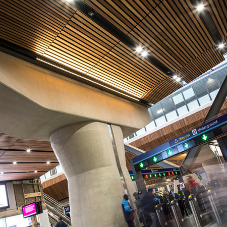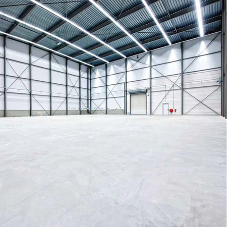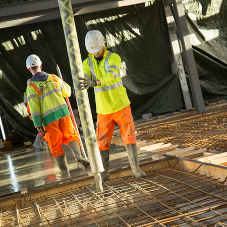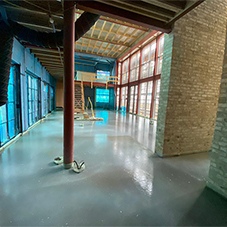With the increasing demand for sustainable building materials in the UK, alongside ongoing changes with industry standards and legislations, it’s never been more important for manufacturers to evaluate and be active in the transition towards net zero construction. Here, Andy Campling, Head of Readymix Performance at Tarmac explains more about the concrete evolution and the company’s initiative to align with new regulations.
Low Carbon Concrete (LCC) signifies the latest advancements in concrete design that are progressing concrete’s transition towards today’s net zero targets. Following years of research, trials and advances in concrete technology, Tarmac’s CEVO low carbon concretes deliver simple solutions to making better and more sustainable material choices.
CEVO represents our commitment to supplying concretes that not only provide transparent carbon savings but also offer a clear performance grading based on the reduction in carbon achieved through the use of replacements, limestone fillers, or an Alkali Activated solution.
Adhering to industry standards
The recent update to the BS 8500 British concrete standard has led us to shift away from the production of CEM I and embrace PLC cements in combination with GGBS and fly ash, a focal point for the industry. This update allows up to 20 per cent of the cementitious elements to be limestone filler, reducing clinker usage and consequently lowering the carbon emissions from cement, ultimately contributing to reduced carbon dioxide emissions from concrete.
The shift to lower carbon cements, as outlined in the MPA’s Roadmap to Beyond Net Zero, is expected to yield a 12 per cent reduction in carbon dioxide emissions by 2050. Encouragingly, manufacturers are actively involved in the research and development required to achieve this goal and it’s already being deployed.
We firmly believe that a zero-carbon future for concrete requires an accurate starting position. Therefore, we have adopted the Green Construction Board's low carbon concrete route map rating classification, providing our customers with complete clarity.
Improving concrete performance
As the demand for sustainable building materials grows, low carbon concrete options are becoming more widely available in the UK. Tarmac’s CEVO low carbon concrete, designed to minimise carbon dioxide emissions during production, offers not only environmental benefits but also several additional advantages. This innovative concrete can match the robustness and durability of traditional concrete, making it suitable for various applications, including both structural and non-structural uses, as well as paving and decorative purposes. Depending on the specific mix design and intended application, low carbon concrete can exhibit comparable strength to traditional concrete.
Low carbon concrete for Hexham Flood Alleviation Scheme
The Hexham Flood Alleviation Scheme is a great example of where CEVO has come into effect. In a UK first, BAM, the Environment Agency and Tarmac have successfully trialled the use of two low carbon concrete mixes in permanent works at the Hexham Flood Alleviation Scheme. A duo of ultra-low carbon concretes, developed by Tarmac to new specifications and compressive strength class C32/40, now form the base and wall of the new structure that protects the town against flood damage.
Following extensive trials for fresh and hardened properties, as well as durability, the two cements chosen for this project were Portland Limestone Ternary Cement C VI and an Alkali Activated Cementitious Material (AACM).
Portland Limestone Ternary Cement C VI was brought in by new cement standard, BS EN 197-5, and contains three cementitious components: cement clinker, ground granulated blast furnace slag (GGBS) and up to 20 per cent of limestone filler. Whereas the Alkali Activated Cementitious Material contains more than 95 per cent GGBS as the cementitious component.
With sustainability being the primary consideration, the carbon footprint of the new concrete has been calculated using the BSI PAS2080 specification and confirmed that the project has achieved up to 70 per cent reduction in CO2e, while also achieving the clients required performance criteria.
Industry aligned low carbon concrete
In the UK, cement, a critical component of concrete, produces an average of 1.5 per cent of emissions, with innovation and investment in efficient plant and fuel switching to waste biomass and road tyres making an important contribution to lowering emissions. Concrete footprints can then be lowered further by replacing some of the cement with secondary cementitious materials such as fly ash, GGBS and limestone fillers.
Understanding the embodied carbon of products is the first part of the journey towards understanding the whole life emissions of a project. For all products, manufacturers must provide product-specific carbon footprint information, enabling customers to have complete visibility and a clear understanding of the products in use. This transparency then facilitates efficient carbon management throughout the supply chain. It also allows for a meaningful comparison of alternative products and services, enabling you to actively seek lower carbon alternatives and understand the impact of using recycled and secondary materials.
For more information, visit https://tarmac.com/products/concrete/cevo/.

%20cropped%20(1)-file147022.jpg)
